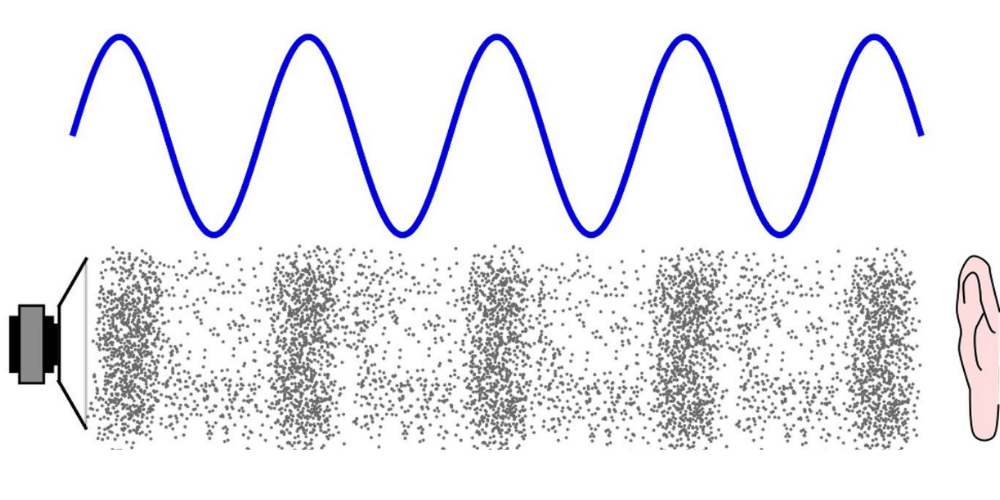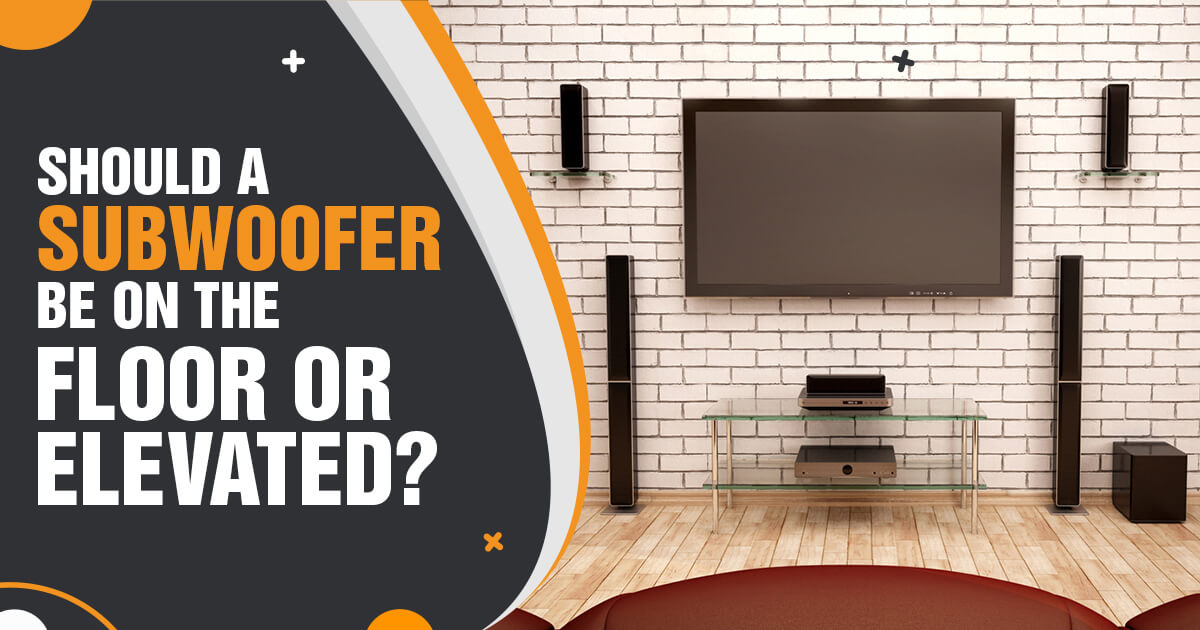Yes, there is a general consensus among experts that placing a subwoofer on the floor will result in better sound quality. This is because when a subwoofer is placed on the floor, it is able to more accurately transmit low-frequency sounds to the listener.
Additionally, having the subwoofer on the floor can help to minimize any unwanted vibrations that may occur.
Should a subwoofer be on the floor? This question has been making the rounds and leaving audiophiles and home theater fans divided like never before.
Of course, there’s no arguing that maximum bass distribution is one of the most important aspects of best audio and bass quality. But how should it sound good?
We’ve all heard it. “Where should I put my subwoofer?” – “Put it on the floor!” – “No, that will only make the bass seem louder; you have to put it in a corner!”
Occasionally, you may find people who think setting the subwoofer down to the side is the best placement. But let’s ignore them for now and discover the broad aspects of this issue and its consequences.
Here Is Best Subwoofer For Floor:
- Extremely high output for chest rumbling home theater special effects.
- Powerful, Pure Home Theater Subwoofer. Perfect for home theater systems that need a little extra oomph. Matches well with any system. Use a single HT/1205 in rooms 100-400 sq. ft. or a pair for rooms larger than 400 sq. ft.
- Predator is devastating when used in dedicated high powered home theater applications, but also transforms the serious gamer’s experience and partners beautifully with active wireless speakers for music reproduction.
- HT-Air Wireless compatible, Front-firing 15 long-throw CarbonGlas driver, 800 watt Class D amplifier, Low Level stereo RCA or .1/LFE RCA inputs, Low Level stereo RCA or .1/LFE RCA outputs for daisy chains, -6dB @ 21Hz in room frequency response.
- WARRANTY: 3 years parts and labor on new products. Covers all REL products and parts that are defective in material and workmanship. We will, at our sole option, repair or replace any defective parts free of charge. The warranty is no transferable.
Does The Subwoofer On The Floor Produce The Best Sound Quality?
When it comes to subwoofers, there are two types of people. One believes that subwoofers belong on the ground. Most people think this allows it to have maximum bass that is more impactful if it’s flush against a wall.
The other type believes subwoofers need to be on a higher surface for enhanced bass. We think it depends on what you’re listening to and your intentions for the subwoofer sounds.
If you want pure, tight bass, then putting your subwoofer directly on the ground is the way to go.
However, if you want a bass that fills the room, it is ideal to put it on a higher surface. In short, even bass distribution in the listening room is crucial to observe.
Also Read: Subwoofer On Carpet Or Hard Surface
What Factors Affect The Sound Quality When Subwoofers Are On The Floor?

Placing a subwoofer on the floor has been a practice for a long time. The main reason is that the bottom surface of the speaker, being large and flat, provides optimum stability.
On the surface, it sounds good to put the biggest speaker in the entertainment system on the floor. After all, you get a richer sound when it’s close to your ear, right?
The answer is no.
Putting your subwoofer on the floor or any place other than a properly designed shelf can affect the bass and sound waves it generates.
However, there are other concerns too that you should consider before placing the subwoofer on the floor.
The number one argument for floor placement is the shaking of the room. It will shake everyone and everything, those standing up or even sitting down. That’s simply due to the uneven pressure distribution that the device generates.
Some other reasons that can paint a red flag on your opinion of placing subwoofers on the floor may include the following:
*Room Acoustics
The placement of speakers and subs is essential to get the most bang for our buck. The subwoofer enclosure may or may not surround speakers for an optimal sound.
Hence, we need to reduce the effects of standing waves, meaning the vibrations subwoofers produce in the room acoustics.
Standing waves are essentially areas of high-pressure waves and low frequency because the sound waves cancel themselves out.
You can find these areas on walls and corners, where two surfaces meet. They are inevitable when it comes to the listening experience in closed spaces.
There can be locations where certain peaks and nulls are more dominant than the others as a room response. This is due to the high and low-frequency bass waves scattered in the room. When these peaks and nulls are optimal for the listening position, we call it the sweet spot.
Some owners deliberately set up their boomy bass in their home theater rooms with nulls and peaks. This creates a dramatic effect that is sought after by many.
They do so by having the subwoofer at the corner of the concrete rooms (e.g., front left corner) where nulls are created. While many theatergoers prefer this, others find it undesirable because it makes it difficult to gauge the proper volume level.
*Vibration
A subwoofer’s primary purpose is to produce sound with low frequencies. As a result, they produce several decibels more than the other speakers. This means that they can create powerful vibrations that could damage things placed near them.
The surface of your listening area is critical when placing your subwoofers and speakers. When installing these devices, never put them on the floor or ground.
Different floor surfaces require different floor bracing techniques to support the vibrations from the speakers. For instance, a wooden floor would not create a similar response to the sound waves as a concrete floor.
However, we can also not ignore that putting them on the floor can enhance the sound output. Therefore, you can seek a middle way between the upper and lower portions for their placement in drywall rooms.
Another important thing: use floor-standing speakers only with mountings that do not vibrate.
They must be firmly secured to a wall or, even better, to a solid concrete foundation. This ensures the safety and prevents the chances of home damage while at the same time reducing noise pollution.
Note: Despite popular opinion, you shouldn’t place a dedicated subwoofer in a corner. Instead, it should be slightly away from the corner. The majority of audiophiles believe that a subwoofer should not be in a position where it is subjected to the boundary-coupling effect.
Do I Need To Put My Subwoofer On The Ear Level To Combat Boomy Bass?
What makes a subwoofer different from them is its ability to produce bass sounds in low frequencies – otherwise known as bass.
While the job of the other speakers in the system is to make sure you are immersed in the beat, the subwoofer’s task is to make sure you feel the music. They amplify mid and high frequencies, which travel in a straight line when placed at ear height.
Unlike other speakers, a subwoofer is not unidirectional and can be placed at ear level. It doesn’t matter if the subwoofer is placed on the floor or the couch; it will still send the same amount of waves in all directions.
Thus, the omnidirectional aspect of subwoofers allows you to locate them anywhere in the room and not specifically at ear level.
What Are The Finest Spots To Settle My Subwoofer For Optimized Sound Waves?

We’ve all been there, trying to get our new subwoofer dialed in. Is the subwoofer on the couch producing too boomy bass? How about that floor stand – what are the best spots to put it?
Sound quality is very subjective and difficult to quantify, but we can improve by adjusting subwoofer placement. Experimenting with different setups and placements will allow you to find what works best for you.
- Table
Rather than the floor, you can place your subwoofer on the table for even distribution of bass. The best type of table to use is a heavy-duty piece of furniture that is fully supported on the legs. A table with one or two missing or broken supports will cause the table to rattle when the subwoofer vibrates.
- Cabinet
A subwoofer on a shelf or cabinet is the best alternative for front-firing subwoofers. If the subwoofer has to be placed on top of your bookshelf or TV cabinet lined with a double plastic protective layer, it is wise to get a stand for it. It would add not only weight but also increase stability.
Remember, platforms made with high-quality materials can help to protect your subwoofer from other vibrations. These may include the ones produced by the rest of the audio setup components or room response, for that matter.
Also Read: Can You Put A Subwoofer In A Cabinet
- Sound Dampening Foam
If you intend to place your subwoofer on the floor, look for a good sound-dampening foam. It should be dense enough to reduce vibrations when installed beneath your subwoofer. The best thing about these foams is that they help you increase your surround sound experience by not letting the floor absorb sound.
They are designed to bring out the best in your sound reflections. The additional height they offer to the device creates an environment for better surround sound performance.
The good news is that these features allow you to enjoy improved audio quality with your home audio system. Vibration pads are important to reduce the effects of the speaker system against the floor, but they’re not meant to replace decoupling altogether.
Can A Subwoofer Be Placed Up High?
Yes, a subwoofer can be placed up high. The main reason why people choose to place their subwoofers up high is because it allows the sound to travel further and fill a larger space. Additionally, placing a subwoofer up high can help to improve the sound quality by providing better bass response and overall clarity.
Also Read: Can Subwoofers Damage Your Hearing
Final Verdict
Ideally, subwoofers should not be placed on the floor because it magnifies the vibrations which can travel to adjacent rooms. However, an elevated subwoofer above the floor has a reduced effect.
However, placing them on stands introduces its own set of problems. The stand can be isolated from the floor and transmit vibrations from other parts of your home theater system.
Simply, subwoofer placement and room acoustics go hand in hand. If you place your subwoofer in a cabinet, the sound of the subwoofer will be enhanced by this acoustical environment.
When done well, placing your subwoofer in your room can make the bass seem much tighter, which enriches your listening experience. Just try to find that sweet spot, and you’ve got all you want.


